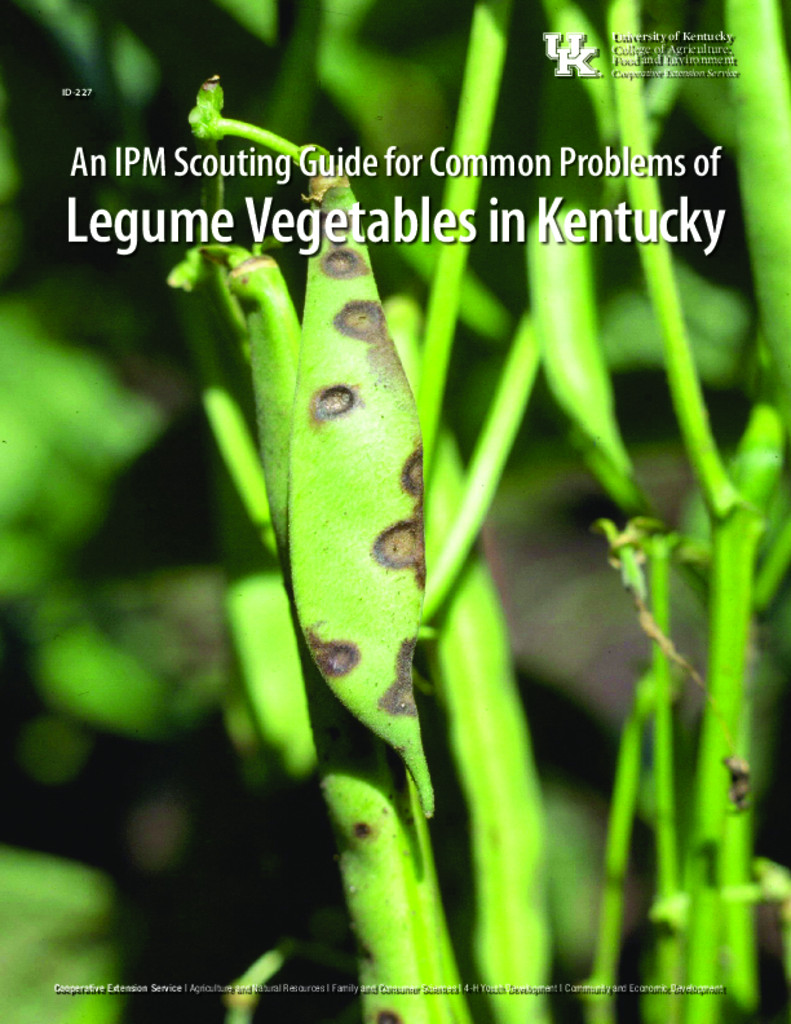An IPM Scouting Guide for Common Problems of Legume Vegetables in Kentucky
An IPM Scouting Guide for Common Problems of Legume Vegetables in Kentucky
Abstract
Long before the term "sustainable" became a household word, farmers were implementing sustainable practices in the form of Integrated Pest Management (IPM) strategies. IPM uses a combination of biological, cultural, physical, and chemical methods to reduce and/or manage pest populations. These strategies are used to minimize environmental risks, economic costs, and health hazards. Pests are "managed" (but rarely eliminated entirely) to reduce their negative impact on the crop. Scouting and monitoring diseases, insects, weeds, and abiotic disorders in order to identify potential problems before they result in serious losses is essential to the IPM approach. Proper identification is essential to determining the proper course of action. The pictures included in this guide represent some common pests or problems that growers may encounter during bean and pea production in Kentucky. This manual is not all-inclusive, and growers may encounter a problem that is not included here. Please contact your county Extension service for assistance.
Core Details
Publication Date
January 30, 2015
Categorical Details
© 2025 University of Kentucky, Martin-Gatton College of Agriculture, Food and Environment

